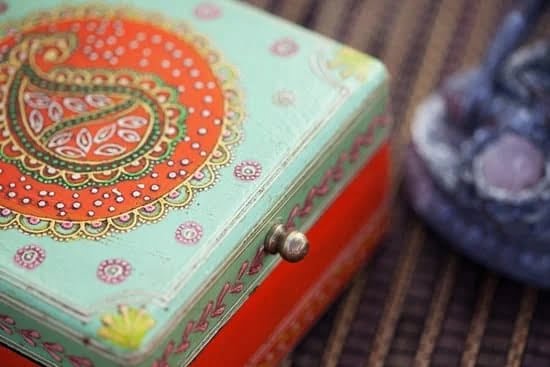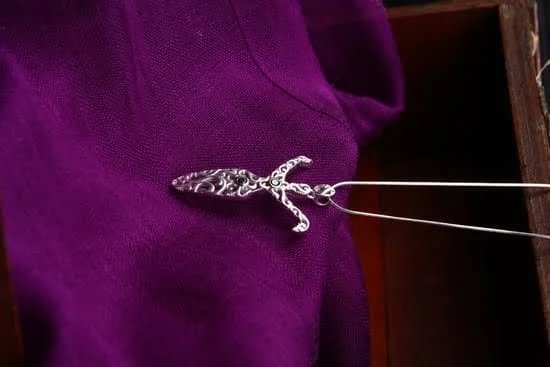Introduction
The process of melting gold to make jewelry has been practiced for thousands of years, beginning in ancient Egypt, Mesopotamia, and other early civilizations. Gold was traditionally melted down to create objects of adornment such as bracelets, necklaces, rings and other items.
This practice is still used today to create intricate pieces that are both incredibly beautiful and valuable. Melting gold offers jewelry makers the freedom to shape it into whatever designs they desire, allowing their creations to take on their own unique shapes and characteristics. The allure of this precious metal is what drives many artisans and crafts people all over the world to create truly stunning works of art using gold. What’s more, using this same traditional technique allows contemporary jewelry designers to pay homage to ancient historical cultures while creating something entirely new.
With so much importance attached to melting gold for artistic purposes, it’s important that those interested in making their own unique pieces understand the basics of how to do so safely and effectively. In order for jewelry makers to successfully melt gold for crafting or investment purposes, both the right materials and a thorough knowledge base are required. Read on for a complete guide on how to melt gold properly!
Pros and Cons of Melting Gold to Make Jewelry
The pros of melting gold to make jewelry include being able to create unique and one-of-a-kind pieces, being able to reuse old metal that would otherwise go unused, and having more control over the design and shape of the jewelry. Additionally, it can be more cost-effective than buying already made pieces because you aren’t limited by what is available on the market.
On the other hand, the cons of melting gold to make jewelry include requiring a fair amount of skill in order to be successful at it, needing proper safety equipment on hand to protect yourself from possible harm when handling hot metal, as well as a potential for an expensive loss should something go wrong during the process. In addition, it can be quite time consuming as you will need to allot a period of time for designing, measuring, cutting and shaping your masterpiece – all before any actual melting takes place.
Variety of Techniques to Melt Gold
There are numerous techniques to melt gold to make jewelry. A beginner can use a conventional torch (propane and oxygen) or focused beam like a laser. Both of these techniques involve heating gold to its melting point and then let it cool into its new shape. It’s important to remember when melting gold that you should use extreme caution and wear protective gear, such as goggles and heat-resistant gloves.
For more advanced craftsmen, there are several options for furnace heating of the gold. A ceramic melter is fairly inexpensive and is used for melting small amounts of metal alloys. Electric resistance furnaces, induction furnaces, or a gas/air injection torches are all also common methods used in a professional jewelry setting. These offer much higher temperatures than air torch method so they tend to provide better results when melting large quantities of gold. Additionally, they can be used with other precious metals such as silver, platinum and titanium making them ideal for creating custom alloy pieces such as white gold settings or tricolor wedding bands.
No matter which technique you choose for melting your gold, you must remember to work in an area with adequate ventilation so as to avoid inhaling any toxic fumes that may result from heated metals. Special care must be taken any time hazardous chemicals or compounds are involved in the process; some compounds may need professional disposal when finished with while others require special handling guidelines according to their MSDS documentation.
Different Kinds of Metals and Other Materials to Use Alongside Gold
When melting gold to make jewelry, it is important to understand what other materials can be used as part of the process. While gold is an incredibly malleable metal, it needs to be mixed with other metals in order to create more durable jewelry pieces and to increase its overall color depth and luster. This usually involves combining different proportions of copper and silver among other base metals that help alloying the gold for a specific purpose. Copper can be added in various forms like copper granules, wire or powder depending on the desired outcome. Silver will add whiteness and strength, while zinc will add hardness. Other metals that can be incorporated into gold mixture includes Tin, Manganese, Nickel as well as Iron which also helps reduce overall costs of production. It is necessary to use non-ferrous metals in order to prevent any reaction between them and the Gold when melted together. In order to ensure complete purity of the item being created out of molten Gold – lead free ceramic balls should always be added while melting it before casting it into a desired mould shape. Doing this will not only result in a better quality piece but also by avoiding any impurities from tarnishing its sheen over time.
The Necessary Tools and Materials You Need to Prepare
In order to successfully melt gold for jewelry making, you need a few basic tools and materials. These can include a torch or furnace (such as a kiln or an induction heater), graphite crucible, flux material, a pickle pot, anti-flux material, jeweler’s grade borax and cruicibles tongs.
The torch that you choose needs to be suited for the kiln temperature that is needed for melting your gold; typically this ranges anywhere between 1160-1465 degrees Celsius. You will also need the proper protective gear such as safety glasses and flame-retardant clothing when working with open flames. Graphite crucible should be designed to sustain high temperatures while withstanding the thermal shock of transferring the gold from the container to another “melting” container/casting source. It’s important to properly fire up the torch prior to melting in order to prevent any catastrophic mishaps that may occur due to sparks flying around in close quarters or any bits of debris which could land on the molten metal. Flux material helps remove impurities from your gold since it acts like an acid bath in order to aid your process by helping keep all those tiny little particles suspended within rather than floating around in your container waiting for their chance at ruining your work later on down the road. The pickle pot provides a safe spot for disposing of unwanted items after filling up containers with unwanted scrap materials such as filings or clippings from soldering jobs without overloading and leaving yourself with dangerous messes in other areas. Anti-flux works best when fired and placed into more layered pieces where different levels of protection are added along with preventing further oxidation from occurring during cooling periods after finished smelting processes have been completed. Jeweler’s grade borax serves many purposes beyond keeping sheet metals free of dust by adding flux on contact when focusing heating elements onto it before finishing complex operations involving precious metals like gold hoping that no flaws remain present within it once forms are given shape correctly otherwise waste and danger result if not done correctly so prepare accordingly! Crucible tongs (specifically designed for copper, brass, silver etc…) proves essential for lifting preparations off surfaces it works best when paired with heat shields so take time choosing appropriately as certain liquids require special treatment despite generic recommendations found online!
A Step-by-Step Guide to Melting Gold
1. Step One: Gather Materials
Before beginning the process of melting gold, you will need to gather the necessary materials. This includes a furnace or kiln, gold, a crucible (a container in which gold is placed for melting), charcoal if needed, a torch with fuel for heat and borax for fluxing material.
2. Step Two: Prepare the Furnace or Kiln
You will then need to prepare your furnace or kiln by lining it with combustible materials such as charcoal and wood or other organic matter that can readily burn away when heated in an adequate amount of oxygen. Make sure to ensure your source of heat is firmly in place and free from obstructions like molds, candles, and similar obstacles. Once this is complete, ensure the area is well ventilated by setting up exhaust fans and other ventilation equipment.
3. Step Three: Placing Gold Into Crucible
Once all safety measures are taken, place your gold pieces into the crucible, making sure to completely fill it up with enough gold for casting purposes but not overfilling it so that too much heat escapes from being able to adequately and efficiently melt down your desired goal amount of gold material at once. Once filled, turn on the heating source you have chosen such as propane/oxygen fuel torches or electrical kilns/furnaces depending on what best satisfies your needs for the jewelry project at hand.
4. Step Four: Melt Down Gold
As your furnaces/kilns start to reach temperatures above 1,700 degrees Fahrenheit (927°C) start adding borax gradually while stirring the mixture every so often until everything look well-blended while making sure not go over 2,000 degrees Fahrenheit (1093°C). After reaching this point quickly remove the vessel containing molten gold out of its fire source immediately so it can cool down until ready for use!
5. Step Five: Cool Down & Utilization of Gold
Finally make sure to cool down your melted gold properly before attempting any manipulation like pouring into casts or working into shapes until it reaches its solid state again which can usually take up several hours depending on conditions in play like temperature levels among other related factors. After this step has been successfully completed safely move onto next steps as desired such as creating jewelry pieces using jewelsmithing tools associated with casting processes involving molten raw materials like gold to create works of art!
Crafting Unique Jewelry From Your Gold
Melt the gold to create jewelry that is uniquely yours and one of a kind. Before you begin melting your gold, make sure you purchase a jewelry-making kit that includes a quality crucible and torch. Once assembled, place the crucible in the torch’s flame, until it glows red hot. This is the melting point for pure gold. Then, add pieces of your gold into the crucible to melt down and reshape into jewelry of your own design.
When pouring molten gold into molds, ensure the mold remains heated by placing it in front of a heat lamp or propane torch for a few moments before pouring in the melted gold. Making custom jewelry from melted gold allows for casting intricate designs with precision control over all details, which could never be achieved through conventional sawing and filing methods. For truly stunning, one-of-a-kind pieces that are sure to impress all who see them, nothing compares to handcrafted pieces made using molten gold. Once melted down and molded into forms you desire, allow each piece some time to cool before polishing any rough edges with an abrasive sandpaper or stone wheel. After completing this step and providing any finishing touches such as etching patterns onto surfaces using engraving tools or acetylene torches, use polishing compounds or buffing wheels on each piece to create an eye-catching shine. Enjoy wearing beautiful jewelry designed and crafted entirely by yourself!
Essential Safety Tips When Melting Gold
If you plan to melt gold to create or repair jewelry, then you should prioritize safety. Gold melting requires careful preparation and work in order to ensure that no harm comes to yourself or others in the process. Here are some tips for remaining safe when melting gold:
• Wear protective gear. This includes eye protection, such as a face shield and industrial-grade welding glasses, and heavy-duty gloves that protect your hands from intense heat.
• Make sure the area is well-ventilated and free of combustible materials such as drapes, carpets, furniture, or other items.
• Clear the area around your melting oven of any flammable items, as hot metals and spilled wax can quickly cause a fire if there are combustible materials nearby.
• Set up a fire extinguisher that can reach you easily in case of an emergency.
• Thoroughly inspect the pots, crucibles and ladles before using them so they aren’t cracked or chipped which may put you at risk of injury by releasing pieces of metal at high temperatures.
• Don’t leave the room while you are working with molten metal; be attentive at all times until your project is finished and all tools/materials have cooled down completely.
• After completing your project, make sure to dispose of used fluxing compounds properly – never pour them down a sink drain!
Troubleshooting Common Issues When Working with Gold
When gold is melted down to make jewelry, one of the biggest issues that can arise is impurities. As gold melts, it has a tendency to draw in minerals and other elements that are not typically found in gold, resulting in an altered color or texture. To combat this, you should use an oxygen-free environment that is free from any potential contaminants. This can be done by using special furnaces specifically designed for melting gold. Additionally, the use of a flux solution – typically made from borax, sulfur, and salt – can help eliminate any unwanted impurities.
To ensure you consistently get good results when melting gold for jewelry making, monitoring the temperature closely is a must. Gold melts at different temperatures depending on its purity and karat value; as such it’s important to know what type of gold you’re working with and adjust the heat accordingly throughout the process. Investing in a quality thermometer will help immensely when working with molten gold due to the need for precise heat measurements.
Finally, once you have successfully melted your gold and poured it into molds or shapes for jewelry pieces – such as engagement rings or pendants – allow your pieces time cool completely before attempting to handle them. Working with hot metal can easily cause burns or other serious damage if handled before sufficient cooling time passes. Using appropriate tools like tongs while handling cooled pieces will keep them properly intact during storage or shipment.
An Overview and Reflection on Melting Gold for Jewelry Creation
Making jewelry with gold is a skill that has been sought after for centuries. It is a labor intensive process that requires a lot of patience and attention to detail. Gold melting is the first step in the process and can be done in several different ways. Here are some methods for melting gold for jewelry-making:
1) Induction Melting – This method involves using an electric current to heat up metal strips that have been laid on top of a graphite block. The metal is gradually melted by the high frequency current, usually reaching temperatures up to 2,400°F. When used correctly this method is effective and efficient.
2) Torch Melting – Torch melting involves the use of open flames and fluxes (liquids) so that impurities can rise to the surface and be removed as slag during casting or investing processes. Natural gas burners or propane torches are frequently utilized as they can reach temperatures up to 3,000°F depending on the size of torch flame being used.
3) Furnace-Top Melting – This involves utilizing small melting furnaces like an induction melting pot which are capable of reaching temperatures over 2500°F and is most effective when working with large amounts of gold at once. In this method, molten metal is collected from crucible by pouring it directly into a flask or mold without touching any other surface inside of it.
No matter which method you choose for melting your gold, safety should always come first when working with high temperature equipment aimed at creating durable works of art out of pure precious material! Additionally, depending on what kind of jewelry making project you want to do, fluxes may need to be sourced from jewelers supply stores or online resources depending on what type you need. Fluxes play an important part in removing impurities from metals, including gold during the smelting process and make certain forms or shapes cast easier — essential information when starting out crafting jewelry pieces with molten gold!

Welcome to my jewelry blog! My name is Sarah and I am the owner of this blog.
I love making jewelry and sharing my creations with others.
So whether you’re someone who loves wearing jewelry yourself or simply enjoys learning about it, be sure to check out my blog for insightful posts on everything related to this exciting topic!





